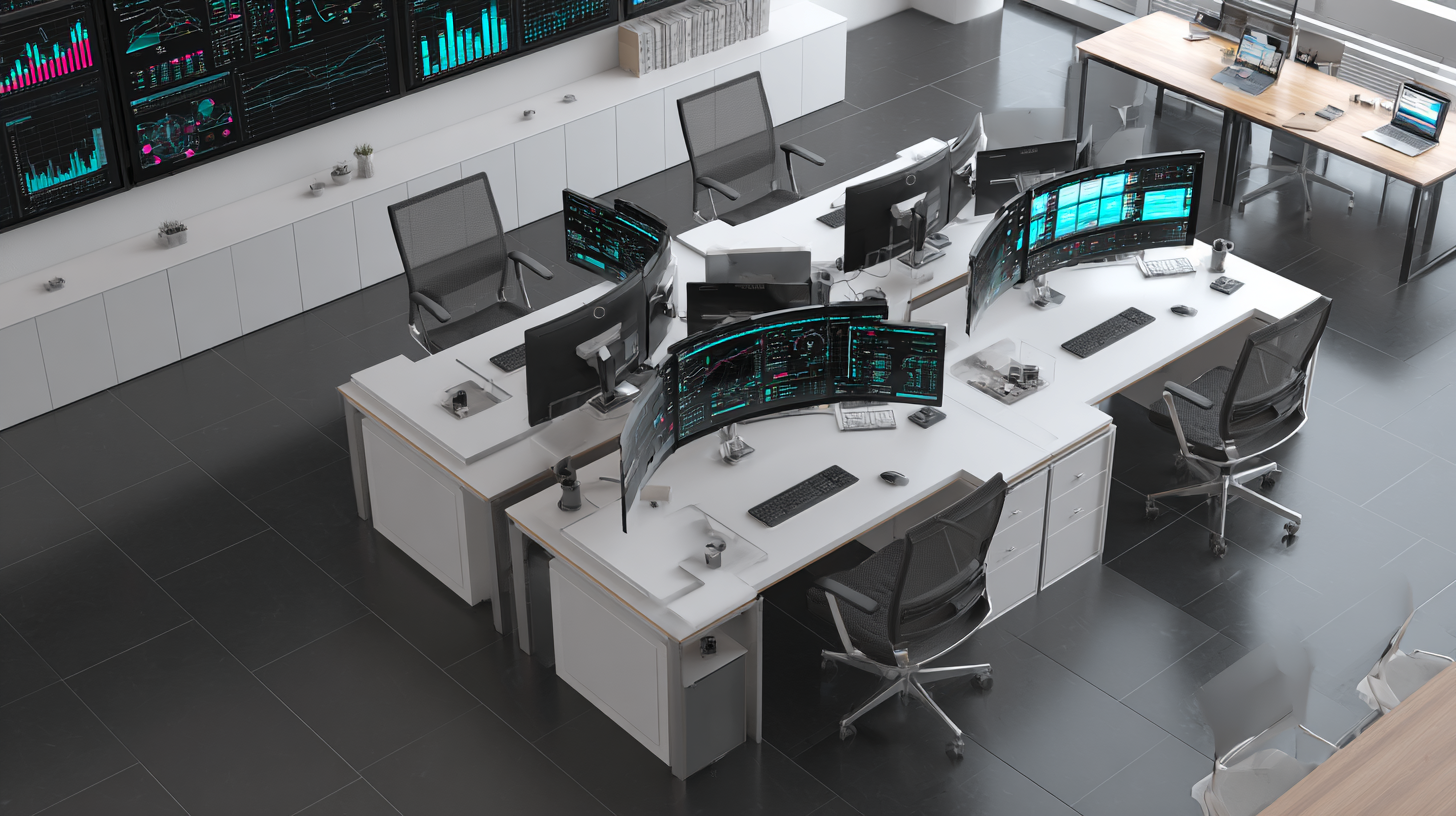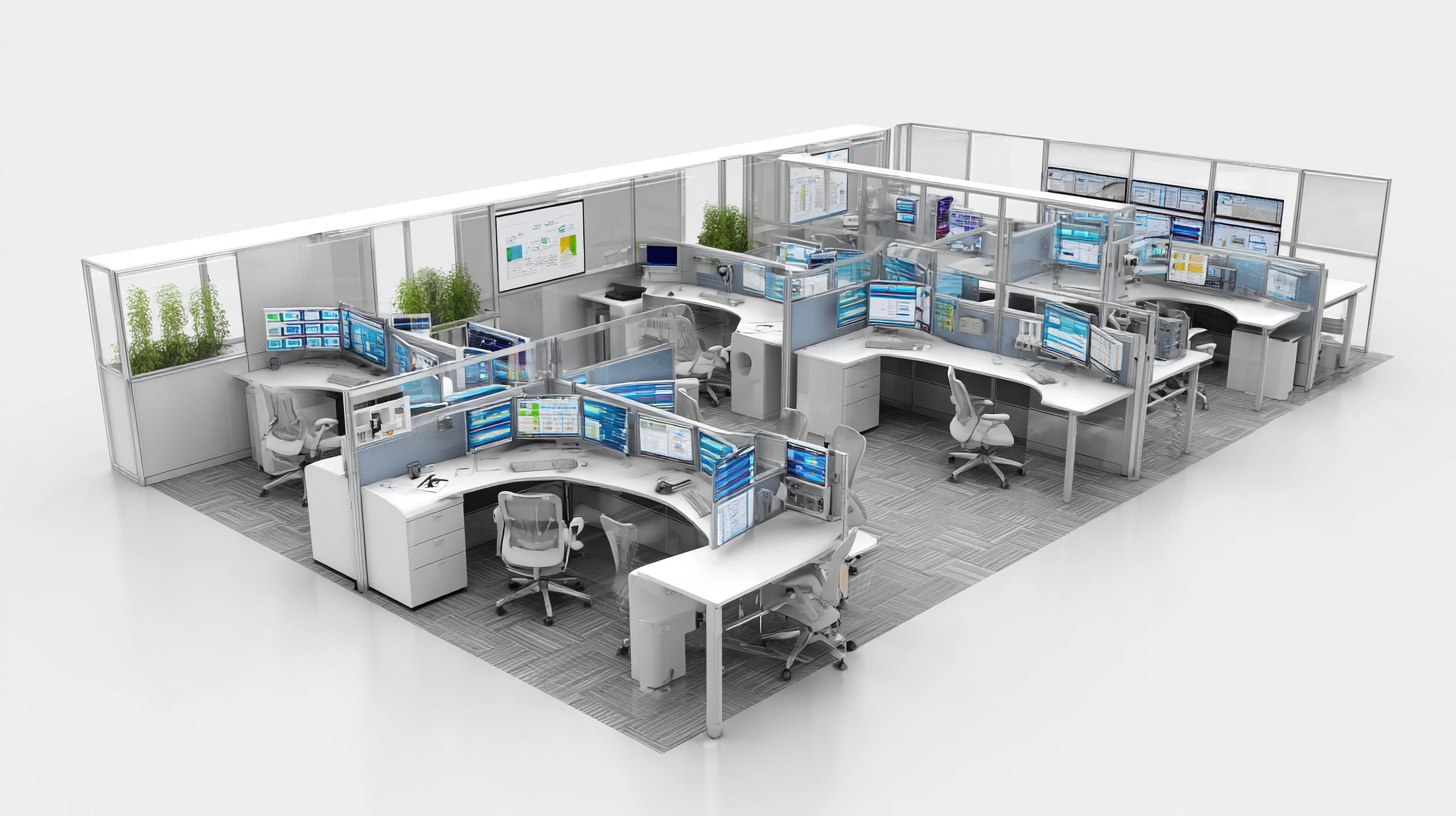In today's fast-paced business environment, effective space planning has become a critical factor in enhancing workplace productivity. According to a recent report by the International Facility Management Association (IFMA), well-designed workspaces can lead to a 20% increase in employee productivity and a 30% reduction in operational costs. As organizations strive to create environments that foster collaboration and innovation, data-driven insights into space utilization are more important than ever.

By understanding how employees interact with their surroundings, businesses can optimize their layout and design, ensuring that every square foot serves a purpose. This ultimate guide to effective space planning will explore proven strategies and best practices that leverage data analytics to transform your workspace into a hub of efficiency and creativity.
When it comes to workspace productivity, identifying key factors that influence employee performance is critical. According to a report by the International Society for Technology in Education, companies can see productivity increases of up to 25% simply by optimizing their office layouts and ensuring efficient space planning. This involves understanding how elements like desk arrangement, natural lighting, and collaborative zones impact employee focus and creativity.
In another study conducted by the Harvard Business Review, it was found that open office environments can often lead to a 30% decrease in productivity due to noise and distractions. By incorporating dedicated quiet spaces and ensuring adequate sound insulation, businesses can foster an atmosphere that promotes concentrated work. Additionally, a Workspace Design report revealed that employees who have control over their workspace, such as the ability to choose their seating or adjust lighting, report higher job satisfaction and perform better overall. Utilizing data-driven insights to inform space planning strategies can lead to significant improvements in both happiness and productivity among employees.
In today’s fast-paced work environment, utilizing data analytics to inform space design decisions has become crucial for optimizing productivity. By leveraging data-driven insights, organizations can create workspaces that not only enhance employee comfort but also improve efficiency. Understanding how people interact with their environments allows businesses to strategically design spaces that promote collaboration and focus.
Tip: Start by collecting data on employee behavior and space usage. Tools like employee surveys, sensors, and observational studies can provide invaluable insights into how different areas of your workspace are utilized. This data will help identify underused spaces or areas that encourage distraction, allowing for targeted improvements.
Another effective approach is to analyze productivity metrics in relation to workspace configurations. This could mean observing how varying layouts impact team performance or creativity levels. Use this information to make data-driven modifications that align with specific employee needs and tasks.
Tip: Test various design elements, such as open versus closed spaces, to see which arrangements yield the best results for your team's unique workflow. Incorporating feedback loops will ensure your space evolves with your team's changing dynamics, ultimately leading to sustained productivity and employee satisfaction.
Incorporating employee feedback into space planning is essential for creating an environment that fosters productivity and satisfaction. When organizations actively solicit input from their employees, they reveal valuable insights into how workspace designs impact their daily tasks and overall well-being. Surveys, focus groups, and informal discussions can provide a wealth of information about preferred layouts, lighting conditions, and communal spaces. This collaborative approach ensures that the workspace is not only functional but also aligned with the preferences of its users.

Moreover, collecting and analyzing employee feedback allows organizations to identify specific needs that might otherwise go unnoticed. For example, some employees may thrive in open spaces that spark collaboration, while others might require quiet areas to focus deeply on individual tasks. Tailoring the workspace to accommodate these diverse needs can lead to enhanced productivity, higher employee morale, and lower turnover rates. By recognizing the importance of employee insights, businesses can create a dynamic and flexible environment that evolves in tune with the workforce it serves.
Creating flexible work environments is crucial for enhancing collaboration among team members. In today’s fast-paced world, the traditional models of workspace organization are evolving. By incorporating adaptable layouts and movable furniture, organizations can foster a sense of community while providing employees with the freedom to choose how they work best. This adaptability not only encourages spontaneous brainstorming sessions but also accommodates diverse working styles, ultimately leading to increased creativity and problem-solving abilities.
Moreover, leveraging data-driven insights can significantly improve space planning, ensuring that areas designated for collaboration align with employee needs and preferences. Utilizing analytics tools to assess how different spaces are used can inform decisions about where to place collaborative zones, quiet areas, and resources. This strategic approach not only maximizes the effective use of physical space but also supports a culture of collaboration, where employees feel connected and engaged. By embracing flexibility in design, businesses can create dynamic environments that inspire innovation and teamwork.
In today's fast-paced work environment, effective space management is essential for maximizing productivity. Implementing technology for real-time space management and optimization has emerged as a game-changer for organizations. According to a study by the International Facility Management Association (IFMA), companies that utilize technology for space planning can increase workplace efficiency by up to 30%. By leveraging data analytics, businesses can gain insights into how spaces are utilized, allowing them to make informed decisions on layout and design.

Real-time space management tools, such as sensor technology and occupancy tracking systems, have further revolutionized workplace optimization. A report from the Global Workspace Analytics reveals that workplaces utilizing such technologies can reduce their real estate costs by approximately 20-30%. These technologies provide invaluable data on employee behavior and space usage patterns, enabling organizations to adapt their environments to meet the evolving needs of their workforce.
Investing in smart technology not only enhances space utilization but also fosters a more collaborative and productive workplace culture. As teams become increasingly mobile and hybrid work models gain traction, the ability to dynamically manage workspace through technology becomes crucial for maintaining a competitive edge in today’s economy.






